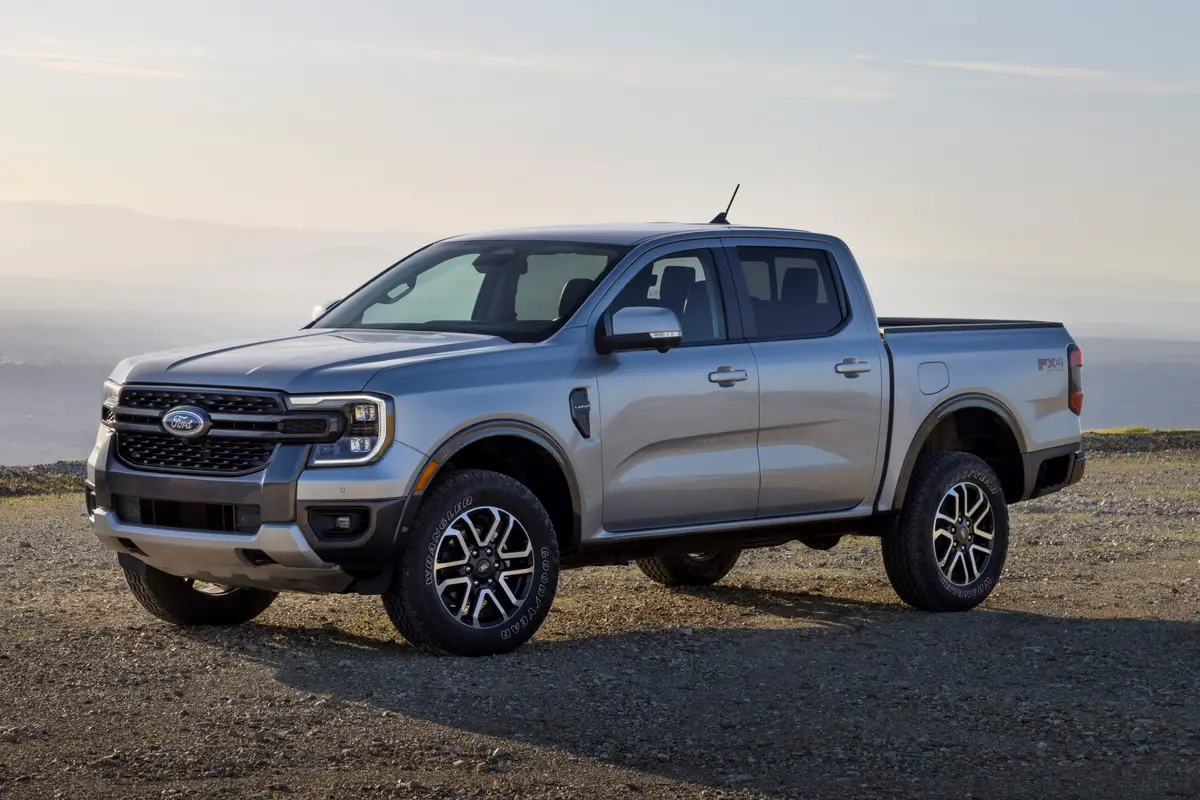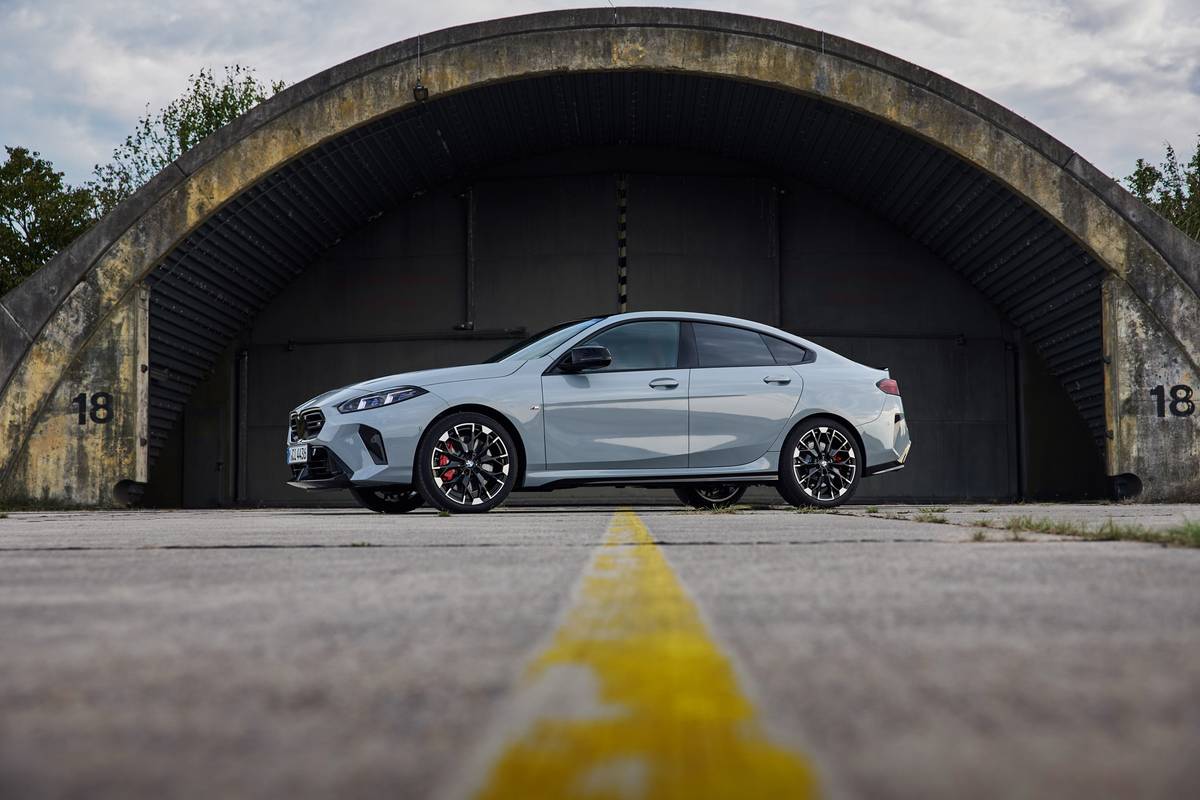Boston.com's view
Why do I feel like I should have a blue light pulsing on my dash?
What makes me think other drivers will slow down when they see this car coming up from behind?
Why do I have this sudden craving for a doughnut?
Could it be that I feel like I’m driving a police-spec Ford Crown Vic?
Could be, but I’m not.
No, this black bundle of sinister stealth is, in fact, the 2003 Mercury Marauder. It represents Ford Motor Co.’s attempt to breathe life into its Mercury division, a unit that, because of a high age demographic (62 for the average buyer), looks frighteningly like Oldsmobile did a couple of years ago. And we know how that story ended.
The Marauder is Mercury’s way of adding zest to its lineup with the introduction of a vehicle that reaches back to the days of the big, bad muscle car. It is a full-blown four-door sedan, imposing from the outside, limo-like on the inside because it is so cavernous.
Besides its sheer size, the Marauder gets its sinister appearance from the pervasive use of black: a gleaming black paint job, dark windows, blacked out reflectors in the headlights, taillights, and even the license plate lights. Were it not for the 18-inch polished, forged aluminum wheels, and the shiny twin-tipped exhaust, this car would seemingly threaten to swallow sunlight.
And then there’s the growl. The 4.6 liter, DOHC V-8 under the hood is routed through an exhaust system tuned for one purpose: make the driver shudder in rumbling joy and announce the Marauder’s arrival to all before it.
The problem is, the growl does not precede a heavy bite.
Now 302 horsepower is a lot of power, in most cases. But when you associate the word "muscle" with a car, you would expect explosive off-the-line performance, even in a 2-ton-plus vehicle. You would expect to be careful when taking off from stop signs lest you patch out by accident, the chirp perhaps bringing some guy who really does have a blue light into your rearview mirror. You would expect to be able to steer using the gas.
Doesn’t happen here.
The low-end power you expect is lacking. Put it in gear, punch the gas, and you get that delightful rumble. But where’s the bite? It lingers out there, somewhere at higher rpms, kicking in a full second or more after the gas is punched.
Further, the four-speed automatic transmission (the only one available) wanted to shift up before I did — and it did. It just didn’t feel like the old days, where the driver was the one who twitched all that muscle.
The sedan-like ride — flat and smooth — owes to nitrogen monotube shocks, rear load-leveling springs, front police spec coil springs, and heavy antiroll bars front and rear. I suspect this setup could handle, with grace, a lot more power. The steering is firm and precise, eliminating any sense of the boatiness that often comes with a big, American sedan.
And once you get the Marauder up to highway cruising speed, it’s a powerful roamer of the roads, smooth, supple, and burbling. But so are a lot of less sinister looking sedans, and they make no claim to being muscle cars.
And on top of that, there are still plenty of real muscle cars, decades old, roaming the highways with far more horsepower and lots more panache than this version of the Marauder. In fact, wouldn’t it be downright embarrassing to own a 2003 Marauder, be stopped at a light, and have a 350-plus-horsepower Marauder from 1970 pull up beside you, some gray-haired guy who knew exactly what he was driving looking over and giving you a smug smile?
Which brings me to another question: How, exactly, does Ford think that this car will bring down the average age of Mercury buyers?
Younger drivers aren’t going to go for it. Some teenagers in my neighborhood, used to seeing me testing some pretty sporty cars, asked me how come I was running around in a "grandfather car.&q ot; Twenty- and 30-somethings never glanced at it when I parked it.
No, the only ones to whom this might appeal, it seems to me, are folks who saw the muscle car craze back in the day and, not wanting the wrench work or finicky traits that go with owning an older car, might opt for the new Marauder as a way of reaching back.
But remember, the folks who recall those days are into their 50s and 60s.
Maybe that’s why, while calling this a muscle car, Mercury really built what is in fact a rumbling, reasonably powered, four-door cruiser. Built for some speed, yes, but built as well for comfort.
It’s got big, broad bucket seats up front. They are not heavily bolstered in anticipation of holding driver and passenger tight in hard cornering. In fact, they are flat and a bit soft at the front edge.
Audio and climate controls on the dash, set in broad horizontal presentations, are big and easy to use. The silver-faced gauges behind the wheel also give the car a look of class.
Unfortunately, and especially in a car costing $35,000, that touch of class is destroyed by other cheap appointments: awful plastic surrounding the audio and climate package; a strip that bisects the cockpit — doors and dash — that, I suppose, is supposed to look like woven graphite but is, in fact, more cheap plastic that has been pixilated with paint.
There’s not a lot in the way of options for the Marauder: upgraded CD player, traction control, and a "trunk organizer."
There is so much about the Marauder that could be fun, and its looks alone will sell it to some people. But once the nostalgia market gets tapped, I’m not sure how many of these will be sold.
2003 Mercury Marauder
Base price: $33,790
Price as tested: $35,045
Horsepower: 302
Torque: 318 lb.-ft.
Wheelbase: 114.7 inches
Overall length: 211.9 inches
Width: 78.2 inches
Height: 56.8 inches
Curb weight: 4,282 lbs.
Seating: 5 passengers
Fuel economy: 18.9 miles per gallon
Nice touch
The chrome-ringed oil-pressure and voltmeter gauges at the bottom of the central control stack just behind the T-topped shifter. Hints of hot rods.
Annoyance
The seating. Too soft. I’d worry about long hours in this car.
Latest news



